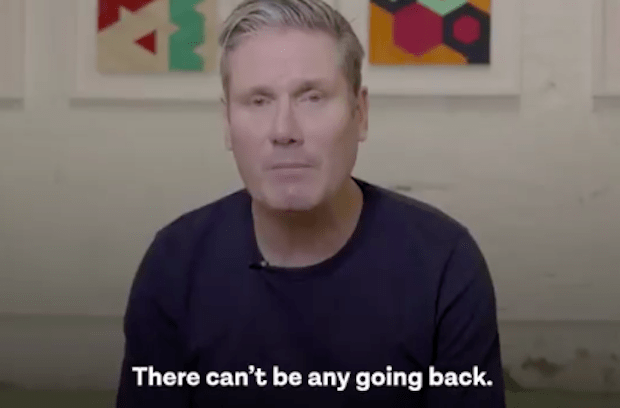The Labour leadership contest is yet to get officially underway – with an NEC meeting to be held on Monday to decide a timetable – but already several horses have entered the race. On Saturday night, Sir Keir Starmer announced his leadership bid – joining Lisa Nandy and Jess Phillips who earlier declared. Starmer is seen as a frontrunner in the contest behind Corbynite candidate Rebecca Long-Bailey. However, where Long-Bailey has had a very quiet start to her campaign (she is yet to officially declare), Starmer has been making up ground.
The shadow Brexit Secretary recently topped YouGov’s first Labour leadership poll. The survey of Labour members forecast that were a contest held now, Starmer would win comfortably – with Long-Bailey in second place:

The poll has privately been viewed as unhelpful by Starmer allies. They worry it could prompt the Labour left to either change the rules or delay the contest until they are in a stronger position to push their preferred candidate.
In the meantime, Starmer is trying to appeal to as many Corbyn supporters as possible. In his campaign video, Starmer pitches himself as a politician on the side of miners, poll tax protesters and striking print workers. He highlights a number of the cases he worked on during his legal career as evidence to this. The video also includes footage of Starmer hugging Corbyn. His campaign slogan? ‘Another future is possible’. This has drawn comparisons with the John McDonnell book ‘Another world is possible’ which offered a guide to 21st century socialism.
It’s clear that the target audience is the Labour membership who will decide the leader rather than the general public who will decide the next prime minister. The membership is broadly supportive of the Corbyn project and Starmer is attempting to suggest that he will continue to keep much of that tradition as leader. Rather than suggest the party needs to drastically change to win again, Starmer is leaning closer to continuity. The messages coming from both Nandy and Phillips so far suggest they are more comfortable putting clear blue water between themselves and the departing leadership.
Speaking on the Andrew Marr show, Starmer attempted to neutralise his Brexit weakness. With Labour losing multiple seats in the ‘red wall’ to the Tories, a key focus in the contest is how the next leader will win these voters back. Starmer, however, is seen as instrumental in moving Corbyn and McDonnell to the party’s election position of a second referendum which many blame for the result. Starmer attempted to move past this – telling Marr that he believed his party must accept the result: ‘the argument has to move on and we the Labour Party need to accept that Leave/Remain, that divide, goes in a few weeks’ time’.
In truth, Labour MPs and party figures supporting Starmer do not envisage that he would really be continuity Corbyn. Starmer is viewed as far more centrist than the departing Labour leader. For now, however, it’s clearly helpful for Starmer to talk up his left wing credentials. The question is whether the membership will buy it. With both Starmer and Long-Bailey expected to sail through the parliamentary round, there will likely be several months to woo the membership. This means Starmer’s beliefs and career will come under greater scrutiny. For the timebeing, Starmer is emerging as the one to beat.







Comments